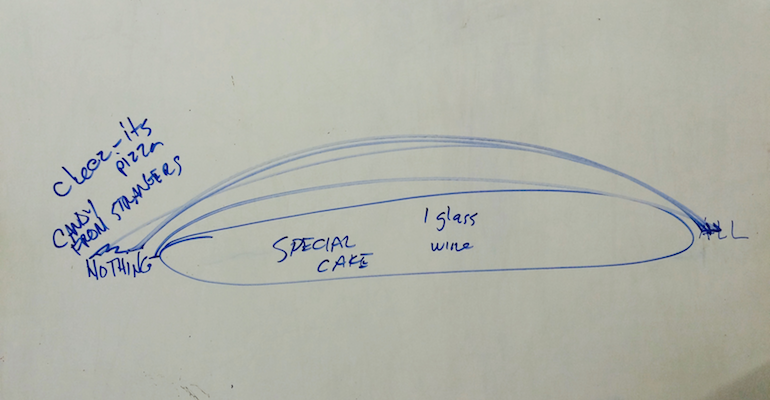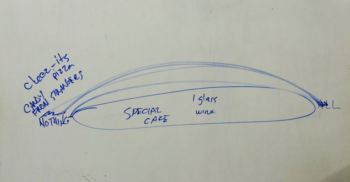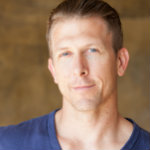 Reading Time: 3 minutes
Reading Time: 3 minutesI was talking with one of my clients, K, last week. K had been really excited about the Whole Life Challenge when she heard about it. As a matter of fact, she signed up two months before it started. Pretty gung-ho and “perfect” for the first few weeks, she told me that she had pretty much failed at this point and had “gone off” the Challenge.
While she found herself able to say “no” to things that people offered her, she’d eventually lose control and gonuts on bowls of candy or one glass of wine after another. She was steadfast, almost righteous, when someone tried to get her to indulge in a non-compliant treat, but almost pathological when she lost her composure.
What K is demonstrating, almost textbook perfect, is the “All or Nothing” mentality. I posted the sketch I drew on the whiteboard as she and I were talking about it. Take a look. At the right you’ll see “all” – complete adherence to the rules no matter what. At the left, “nothing” – where rules cease to exist.
K has found herself bouncing back and forth between the two, completely skipping over that big open, livable space in the middle. She can’t even see it. It’s invisible from her mindset. Rather than being able to treat herself to measured, well chosen indulgences, she can only cycle between “all” (angry, righteous, and defensive) and “nothing” (being a disappointing failure).
This is perfect because it falls right in line with the happiness and Joy conversation from yesterday. At the extremes are your emotional responses. When it’s “all” you’re bored, angry, righteous, afraid. Then when it’s “nothing,” where you believe you’re going to experience “happiness,” you just end up with some variation of angry, righteous, disappointed, or disgusted. Mindless adherence or mindless disregard – both are responses to emotion and judgement.
And in case you missed it, the big problem with “All or Nothing” is that once you’re not in “all” you’re automatically switched to “nothing.” You can’t even access a middle path. It’s a flyover state. You never land there. The moment you have one thing, anything goes.
That middle section? That’s where Joy is. That’s where you can enjoy things, free of judgement, fulfilled and wholly aware of how your choice fits into the overall picture of living. It’s a place of acceptance. Your choices don’t make you a good or bad person. They are just choices. They move things. Sometimes a candy bar is more important than kale. Who’s to say the joy you get from a piece of pie doesn’t have a bigger positive effect on your health than never eating one?
If it wasn’t so frustrating for her, it would be funny. K will say “NO!” to things like a single glass of wine or a piece of birthday cake, only to find herself scarfing handfuls of jelly bellies, totally void of real enjoyment. It’s the ends, the places of raw emotional response, where you drown in boxes of Cheez-its and take candy from strangers.
The irony is, the middle ground can include bowls of jelly bellies or boxes of Cheez-its. It’s about acceptance and non-judgement. That’s where Joy comes from. Sometimes you’re gonna flip out. The real trick is not punishing yourself. When you can do that, the middle way becomes visible and the ends disappear.
It makes no difference that you’ve “failed.” It’s judgement. It’s an excuse. I don’t care if you just had a pint of Cherry Garcia for dinner. Accept it, love your damn self for being a perfect human being, and move on. You’re here to open your eyes. You’re not always going to think what you see is pretty. But you can only move what you can see.







